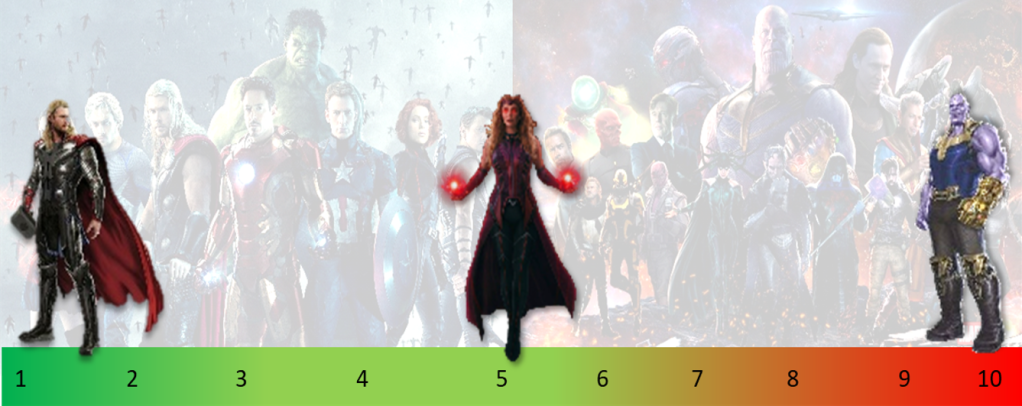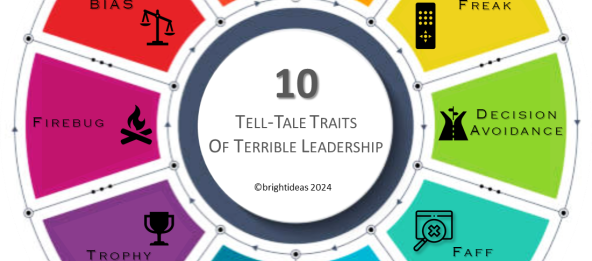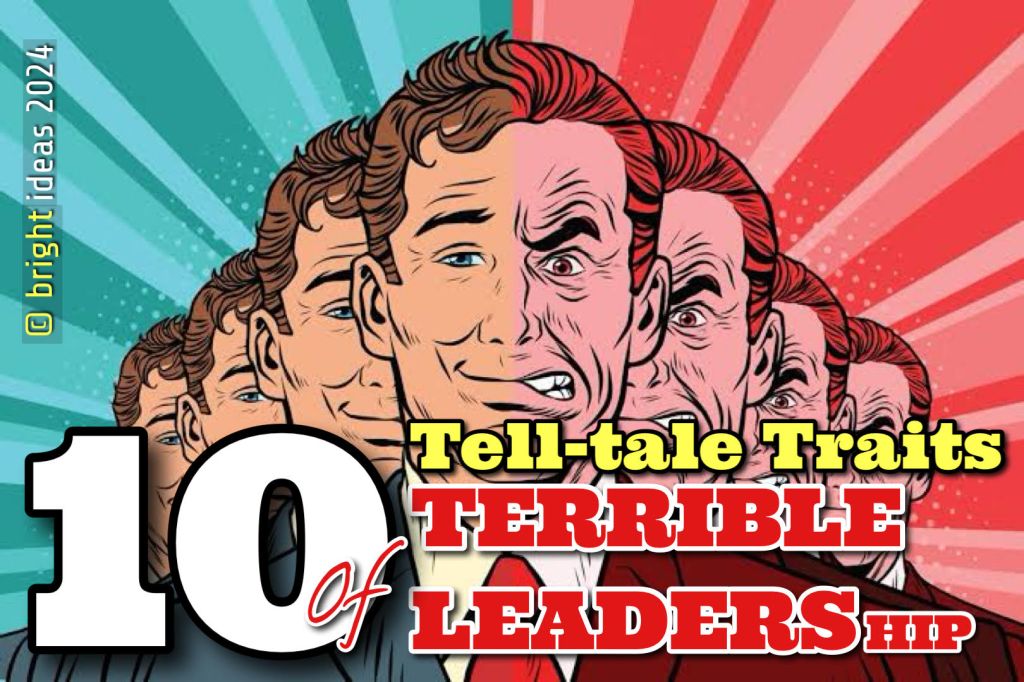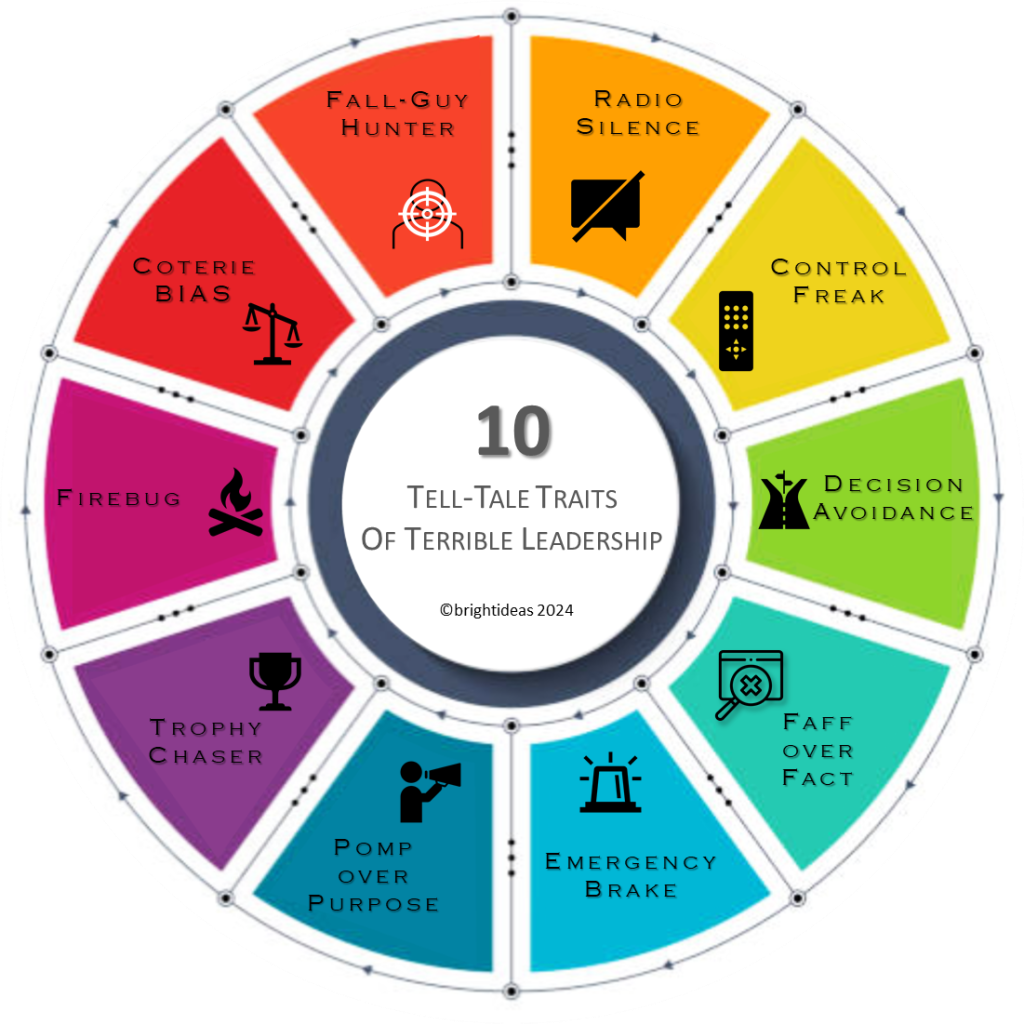The fact that you have gone beyond the title and started reading this post is proof that tapping into emotions is easy and tapping into negative emotions easier 😊
I have been thumbing through multiple books and articles on leadership and management as part of research that I am doing. That combined with experiences in my own professional life (including yours truly as a leader) have led me to distill my considered opinion into this blog post.
What I am about to present to you are traits that one must be on the lookout for if you are being led and even more so if you are the leader. There are ten tell-traits that one must be wary of. Every leader I know of or have read about has had at least one of these flaws. All leaders, depending on situation and context, are prone to displaying these traits. The challenge and a big one is when these traits are on display consistently.

The score on a scale of 1-10 would have a fictional superhero like character on one end (say Thor) and a villain (Thanos) on the other with Wanda as the inflection point between the forces of good and bad. Fictional for the simple reason, nobody is that perfect or even that flawed! To those unfamiliar with the Marvel Comic Universe – just replace the names with superheroes or villains with whom you are familiar.
So here are the Tell-Tale Traits in no specific order. How many can you associate with yourself or with a leader you know?
- Radio Silence: A leader who does not interact often with the team or interacts only when there is a task to be assigned or only on occasion or with an appointment is bound to end up as an unpopular one. Again, this is not to say that one must be an extrovert to be a good leader. It is accessibility that is crucial for leaders. Styles of interaction may differ but one thing that all good leaders do is make an effort to be seen in the trenches.
- Control Freak: While it is important to monitor progress, we all have seen leaders who get under your skin with their supervision. A key requirement for a leader is the ability to delegate tasks. There is skill associated with the ability to identify appropriate resources for the task and setting clear success metrics. A skill the Control Freak lacks.
- Decision Avoidance: This is thin ice. A leader is expected to be decisive. Procrastination, though avoidable, is still acceptable. After all, situations need to be analyzed and consequences weighed but a leader who constantly avoids taking decisions is trouble incarnate.
- Faff over Fact: A leader who often focusses on optics and is happy to gloss over facts is a potential integrity and ethics disaster waiting to happen. Convenient interpretation and cuts of data are a trap. A leader who accepts or looks the other way when a subordinate does it is worse. There will come a time when one too many facts have been overlooked or misrepresented. You do not want to be around when that happens.
- Emergency Brake: This is a trait often seen in conjunction with trait three above. A leader who is not fully or deeply engaged is often the one who resorts to the application of emergency brakes. In general, there is a lack of clarity or direction, and conflicting views abound. All work gets stopped, often with little or no explanation. A display of trait three ensues.
- Pomp over Purpose: Many new leaders are guilty of this. Some unfortunately continue with it. This is when leaders commission projects and campaigns, hold workshops and events needlessly under the garb of collaboration or building wider, deeper understanding. The return on time and money invested quite frankly is not a consideration nor are “understanding” or “collaboration” well-defined objectives. The idea is not to say no to such exercises, it is doing them with clear outcomes.
- Trophy Chaser: Again, there is nothing wrong with ambition or going for the win. If that were the case, there would be no examples from sport or war, especially, when it came to leadership. Winning is important, participation is important. But doing anything for the sake of just that is meaningless. You do not stop during a marathon to win a game of darts!
- Firebugs: Some people are busy like a hive. They can multi-task. The challenge is being fickle, not seeing through what has been set into motion to its logical conclusion. Such leaders are firebugs. They have the tendency to light multiple fires, the latest one invariably is priority, and they gather people around that one with scant regard for the status of fires lit previously.
- Coterie Bias: It is human to crave attention. We are all vain. Leaders too. Unfortunately, popularity as a leader is something only an exceptional few achieve. Some understand and learn to live with the fact. There are leaders though who create their personal bubble – surround themselves with people who laud them, right or wrong. Over time their reality alters based on facts/fiction that is fed to them. Often this leads to blatant, unapologetic biased opinions. Sycophancy is not just a terrible trait it is a dangerous one!
- Fall Guy Hunter: This is a trait that should set alarm bells ringing. A leader is accountable. In the real-world things do go wrong, all of us have at some point in our lives taken wrong decisions, made an inadvertent mistake. Yes, errors need correcting, performance needs improving, and the buck must stop somewhere. The leader has the right to reward or reprimand. That said, the onus is also on them to course correct and deliver. Error detection does not absolve the leader of their duties. Covering up is different from covering for. Mistakes are a test of character all round. A leader who throws his team under the bus is not worthy of his position.
The traits listed above are by no means exhaustive. They are nonetheless, traits that are highly visible/tangible.
A good starting point for all of us whether leaders or leadership aspirants or plain simple contributing units of a professional (even social) structure.














 Here’s the good thing about resolutions. You get to make new ones regardless of having lived up to them!
Here’s the good thing about resolutions. You get to make new ones regardless of having lived up to them!
 More of | Re-imagination. An INDIA take on things.
More of | Re-imagination. An INDIA take on things.

 We are a cricket crazy nation or at least have been one ever since I can remember.
We are a cricket crazy nation or at least have been one ever since I can remember.

 Ganguly – The captain who taught India that they could win against anyone, anywhere!
Ganguly – The captain who taught India that they could win against anyone, anywhere!
 Finally, Virat Kohli – The captain who is teaching India that they can win against anyone, anywhere, from any situation again and again.
Finally, Virat Kohli – The captain who is teaching India that they can win against anyone, anywhere, from any situation again and again.

 Stop |
Stop | More of |
More of | 

 Less of |
Less of |

 Sustainable Packaging. Made a train journey recently and trust me the sight along the railway tracks was not a pleasant one. Tonnes of branded litter just lying around. From PET bottles to bags of wafers there they were strewn across boldly displaying their brands. If plastic is bad for the environment and use of paper leads to cutting of trees isn’t it about time we had more environmentally sustainable options? I would pay a rupee more if I had to. Hoping we all would.
Sustainable Packaging. Made a train journey recently and trust me the sight along the railway tracks was not a pleasant one. Tonnes of branded litter just lying around. From PET bottles to bags of wafers there they were strewn across boldly displaying their brands. If plastic is bad for the environment and use of paper leads to cutting of trees isn’t it about time we had more environmentally sustainable options? I would pay a rupee more if I had to. Hoping we all would.

 Non-cricket leagues! It was heartening to see brands support sport other than cricket. The Football league, Kabbadi league, Tennis league all survived another season. The fact that TV ratings saw an increase for Kabbadi and also for the Football league (except on days when there was cricket featuring India) augurs well for both the future of the sport and the potential that exists for brands.
Non-cricket leagues! It was heartening to see brands support sport other than cricket. The Football league, Kabbadi league, Tennis league all survived another season. The fact that TV ratings saw an increase for Kabbadi and also for the Football league (except on days when there was cricket featuring India) augurs well for both the future of the sport and the potential that exists for brands.




